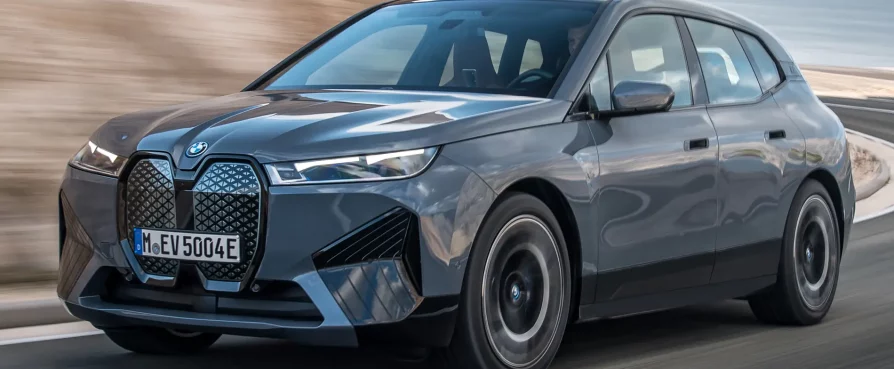Ecocar Mobility Challenge
With automotive technology evolving so rapidly, training the next generation of vehicle engineers can no longer be limited to traditional classrooms and books. Real-world, hands-on experience is crucial, and that’s why collegiate automotive engineering competitions, like the Ecocar Mobility Challenge, are more important than ever. Well, the 2022 edition is now complete, so let’s tally up the results.
Ecocar Mobility Challenge is a 4-year competition in which 11 North American college teams were challenged to reduce the environmental impact of a Chevrolet Blazer SUV, while retaining or enhancing its utility, safety and performance.
 After a year of modeling and simulation, teams were given their vehicles for year two, and have worked ever since on implementing their designs. But the students also had to think “real-world” in terms of packaging their components for fit and finish, drivability and consumer acceptance.
After a year of modeling and simulation, teams were given their vehicles for year two, and have worked ever since on implementing their designs. But the students also had to think “real-world” in terms of packaging their components for fit and finish, drivability and consumer acceptance.
Headline sponsor General Motors provided the vehicles, and encouraged the teams to mimic its global vehicle design process, by which GM develops its own prototype vehicles. They also hosted all 11 schools for this year’s finals at their proving grounds in Yuma, Arizona.
We caught up with the competition at phoenix raceway where media, sponsors and local school students were allowed to check out the finished projects in motion, and learn about the some of the design challenges directly from the teams.
COLIN KELLETT: “To try to set ourselves apart from the competition, we did try to implement something that you can find in hybrid vehicles today, with our very own one-pedal-like driving regenerative mode. Um, this does happen to be on the aggressive side, and calibration processes was a little difficult. Again, we were only allowed one mode of operation.”
 The US Department of Energy pitched in their own expertise and organizational muscle, with engineers from Argonne National Lab managing the competition. Judging is conducted after each year of the competition, measuring progress in terms of emissions, economy and component integration, as well as pure performance. And no matter what their results, the prize for the students in terms of knowledge and experience has been invaluable.
The US Department of Energy pitched in their own expertise and organizational muscle, with engineers from Argonne National Lab managing the competition. Judging is conducted after each year of the competition, measuring progress in terms of emissions, economy and component integration, as well as pure performance. And no matter what their results, the prize for the students in terms of knowledge and experience has been invaluable.
MARK SMITH: “The Department of Energy has been sponsoring these student competitions for more than 30 years now. Important from several standpoints. Number one is we want to make sure the teams are working on those, whether alternative fuels or advanced technologies, and certainly this competition is focused on connected and automated vehicles, but what are those new and cutting-edge technologies that are coming to transportation. So, it’s good to have the teams focusing on these because these are the future engineers who are going to be working for our car companies, working for our national labs, even working for DOE, so now they get the hands-on training with an OEM vehicle and really gives the expertise they need to step into those future roles.”
After a grueling week of testing, Georgia Tech claimed top team honors for 2022. Originally a six-cylinder, the Georgia Tech ecocar team converted its Blazer to a four-cylinder hybrid vehicle with adaptive cruise control. Its vehicle-to-infrastructure communication technology allows it to “talk” to stoplights and adjust its speed for optimization.
 Congratulations also go to Ohio State for 2nd place and the University of Alabama in 3rd position.
Congratulations also go to Ohio State for 2nd place and the University of Alabama in 3rd position.
Many innovative ideas have emerged from the competition and no two cars turned out exactly alike. But amazingly, all eleven teams produced a drivable, nearly-production-ready vehicle — imagined, engineered and built solely by college students.
BETHANY WELTY: “If you go look at other cars, they’re all different. People have different engines, different battery pack sizes, different motors, different wheels. I think we’re the only people to have 18-inch wheels, and also the way that we did our cargo space is different than everybody else. I think we actually maintained the most cargo space, which is really great.”
COLIN KNIGHT: “So, our vehicle is equipped with six radars, all around the car; so three up front, one on either side and then one in the rear. There’s a Mobileye camera in the windshield. So, the six radars and the camera give us a 360-degree field of view around the car and that gives us the ability to make those decisions on what the car should do on the open road. We passed everything. everything worked as intended, so that was really encouraging.”
Best of all, lessons learned in this classroom will benefit all of us, as the next generation of automotive innovators takes charge!






